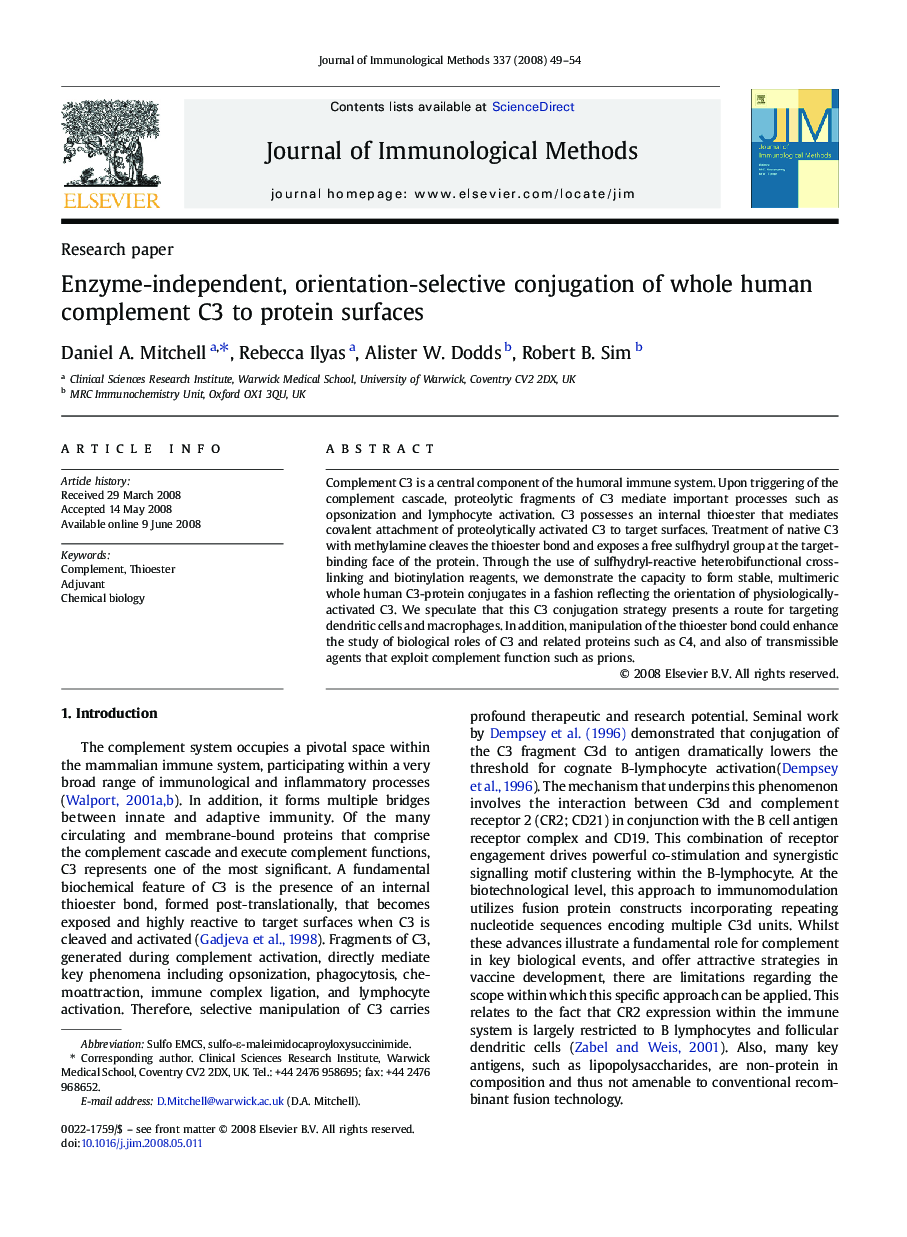| Article ID | Journal | Published Year | Pages | File Type |
|---|---|---|---|---|
| 2089195 | Journal of Immunological Methods | 2008 | 6 Pages |
Abstract
Complement C3 is a central component of the humoral immune system. Upon triggering of the complement cascade, proteolytic fragments of C3 mediate important processes such as opsonization and lymphocyte activation. C3 possesses an internal thioester that mediates covalent attachment of proteolytically activated C3 to target surfaces. Treatment of native C3 with methylamine cleaves the thioester bond and exposes a free sulfhydryl group at the target-binding face of the protein. Through the use of sulfhydryl-reactive heterobifunctional cross-linking and biotinylation reagents, we demonstrate the capacity to form stable, multimeric whole human C3-protein conjugates in a fashion reflecting the orientation of physiologically-activated C3. We speculate that this C3 conjugation strategy presents a route for targeting dendritic cells and macrophages. In addition, manipulation of the thioester bond could enhance the study of biological roles of C3 and related proteins such as C4, and also of transmissible agents that exploit complement function such as prions.
Keywords
Related Topics
Life Sciences
Biochemistry, Genetics and Molecular Biology
Biotechnology
Authors
Daniel A. Mitchell, Rebecca Ilyas, Alister W. Dodds, Robert B. Sim,
